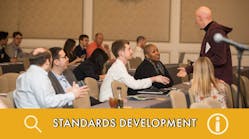Mobilized LED lighting system grows grass on Bundesliga soccer pitch
Rhenac GreenTec designed a large-scale wheeled lighting structure using LEDs and LEDiL optics that is utilized to optimize the grass conditions on training and match soccer pitches for the FC Köln (FC Cologne) football club of the German Bundesliga.
Horticultural LED-based lighting is a hot topic for applications ranging from herbs to tomatoes to legalized and medicinal cannabis, but solid-state lighting (SSL) can also be used to grow lawn-style grass on athletic fields. The FC Köln (FC Cologne) football club of the German Bundesliga (top German pro soccer league) is using a mobilized LED light structure that can move around the team’s training and match pitches (fields), ensuring that the grass is in top shape despite the stress caused by regular usage. Hennef, Germany-based Rhenac GreenTec AG developed the LED lighting system that further uses Tina2 optics from Finland-based LEDiL Oy to deliver the required beam pattern for the unique application.
Interested in articles & announcements on horticultural lighting?
Rhenac makes a number of LED-based lighting products for applications ranging from architectural lighting products to traditional horticultural lighting products such as we have covered on a regular basis. The company sells those horticultural products under the brand LabLED and the target market thus far appears to be research on plant production.
The Greenkeeper LED system leverages horticultural lighting to improve the soccer pitch conditions for the FC Köln (FC Cologne) football club.
The sports pitch product is called GreenkeeperLED. The large wheeled grow-light structure was developed based on research done at the Greenhouse Laboratory Centre that is part of the Weihenstephan Research Centre at the Technical University of Munich. Some professional athletic teams have used high-intensity discharge (HID) lamps to speed the recovery of grass on playing fields, especially in colder winter months with short daylight hours. The research sought to evaluate an alternative to widely used sodium-vapor lamps.
Ultimately, Rhenac designed the GreenkeeperLED systems with a mix of LEDs featuring mainly red LEDs with a smaller number of blue LEDs to cover the well-documented chlorophyll absorption peaks of plants. Furthermore, the system includes an integrated infrared heating system to approximate ideal grass-growing conditions.
The FC Köln club has found that the LED system delivers six times more light to the playing surface relative to the older HID system. And the mobility enables the pitch crew to move the system into areas that require extra attention. For instance, the areas in front of the goals see a disproportionate amount of traffic during a match and therefore need more treatment from the LED lighting. The team has found that the system leads to grass filling in gaps damaged by play much more quickly than with the older system. Meanwhile, the LED sources are delivering energy savings at the same time.
Turning briefly back to more mainstream horticultural lighting, our first European Horticultural Lighting conference was a big success in Eindhoven, the Netherlands last week. We are planning our fall US conference for Denver. If you haven’t already done so, read our report on the 2016 Chicago conference to gain more insight into our programs.

Maury Wright | Editor in Chief
Maury Wright is an electronics engineer turned technology journalist, who has focused specifically on the LED & Lighting industry for the past decade. Wright first wrote for LEDs Magazine as a contractor in 2010, and took over as Editor-in-Chief in 2012. He has broad experience in technology areas ranging from microprocessors to digital media to wireless networks that he gained over 30 years in the trade press. Wright has experience running global editorial operations, such as during his tenure as worldwide editorial director of EDN Magazine, and has been instrumental in launching publication websites going back to the earliest days of the Internet. Wright has won numerous industry awards, including multiple ASBPE national awards for B2B journalism excellence, and has received finalist recognition for LEDs Magazine in the FOLIO Eddie Awards. He received a BS in electrical engineering from Auburn University.





